Hi,
I've been attending quite a few Rev War period living history events over the last few years and it is clear that many Rev War units are getting pretty old. I noticed that some folks struggle to cock their muskets because the springs are often way too stiff and they are not as strong as they once were. So, when I can and have time, I will help some of those folks "age in place" with their musket locks. That means I weaken the mainspring and balance the frizzen spring along with it. The end result is as good or better performance without so much strain. Ironically, I usually have to strengthen the frizzen spring because many reenactors subscribe to the notion that the frizzen spring just needs to be strong enough to hold the pan cover closed. That is one reason why when they pull the trigger 10 times, they have 3 misfires. They don't believe me when I tell them the British Army expected their Brown Bess lock to ignite the pan priming 40 times in a row with no misfires and using 1 flint.
At Kempton, a friend handed me his Navy Arms Charleville musket to "age in place" his lock and improve its performance. These muskets were made by Miroku and were the best reproductions of any Rev War musket commercially made. The lock is superb and I just needed to clean up the lock, polish the bearing surfaces, weaken the mainspring, and adjust the frizzen spring. I also adjusted the sear spring to allow a lighter trigger pull. I had not worked on one of these for years and forgot how good they are.
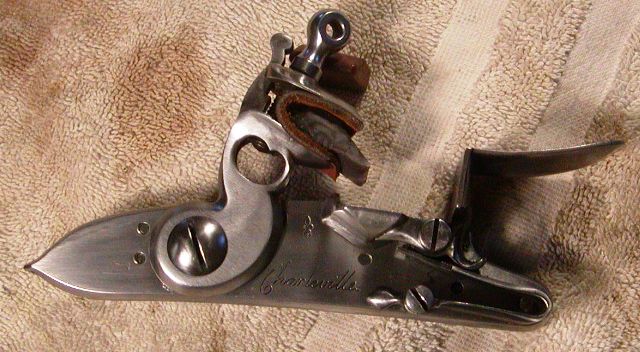
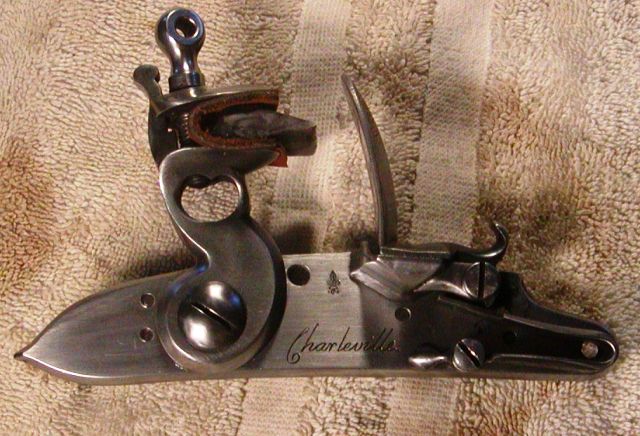
The musket reproduces the French model 1766 or 1768 infantry musket. It was also known as the "light 63" because it was a substantially lightened version of the first model 1763 musket issued. Didier Bianchi wrote in his book "French Military Small Arms" that the locks on these muskets were the best flintlocks ever used on French muskets and probably on any 18th century muskets. They were expected to ignite the pan 120 times without a misfire and using only 3 flints in the process. There are many features of this lock that are superior to the British Brown Bess locks. The double throated flint cock is incredibly strong and the geometry of the lock puts the sparks right in the pan. The throw of the cock is shorter than the Brown Bess making it a faster lock. The detachable pan is a very nice feature when it comes to cleaning and servicing the lock. One feature I wanted to highlight is the way the mainspring and tumbler interact. The first photo shows the hook of the mainspring on the tumbler foot when the lock is at rest.
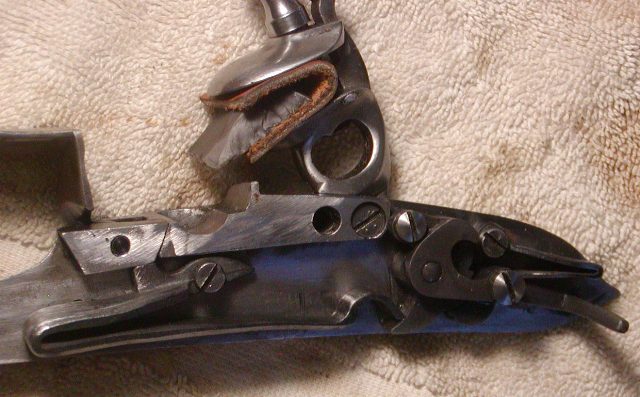
The next photo shows the lock at full cock. Note the end of the hook is positioned right in the inside corner of the tumbler foot. What happens, is the tumbler both lifts the spring up as you cock the lock but also rotates around the round nose of the mainspring hook.
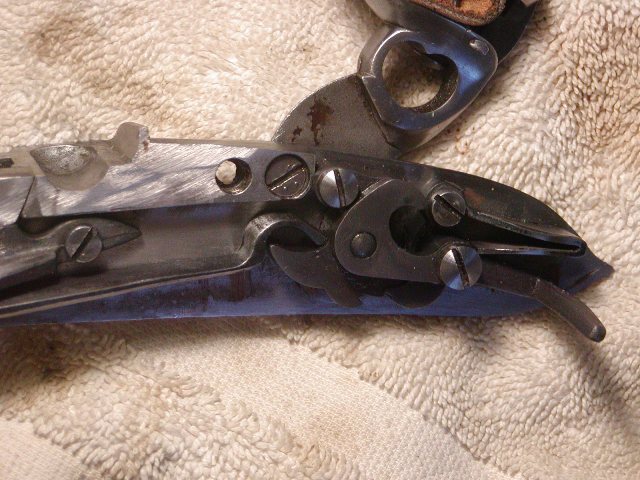
In the photos below, the black tape marks the position of the mainspring at rest showing how far the spring moved going to half cock. Then the tape is moved up and the lock is drawn to full cock so the tape shows how little the spring moved from half to full cock. That combination of limited movement up and rotation of the tumbler around the hook provides mechanical advantage making the force required to pull the lock back to full less than the force required to pull it to half cock. That offers options for a lighter trigger pull without sacrificing any power in the mainspring. It is an excellent design and Miroku did a great job reproducing it.

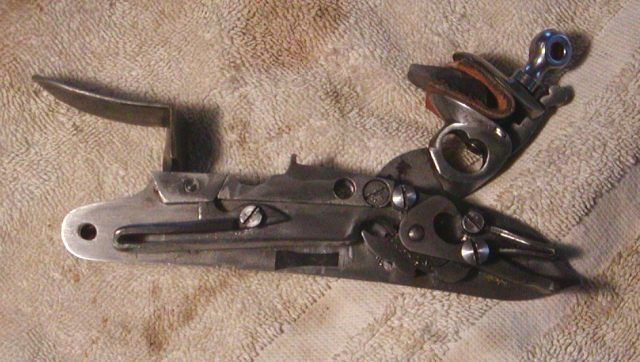
Of course the proof is how well does it spark. Even with a dull flint it does really well! In the last photo, which is the next instant after the second photo was taken, you can see residual sparks still burning inside the pan and out like a sparkler.
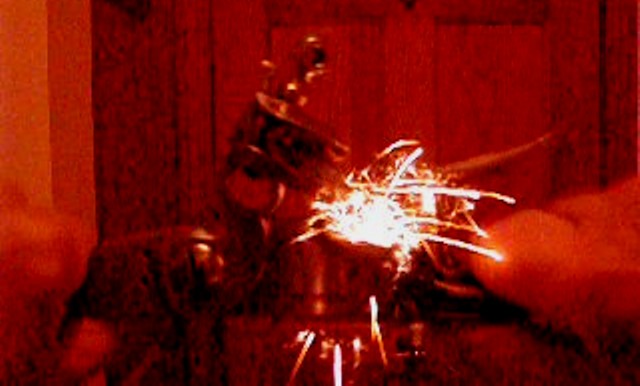


This lock teaches a lot about good lock design.
dave













